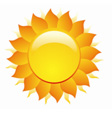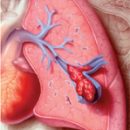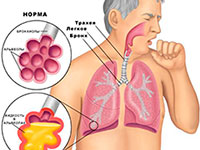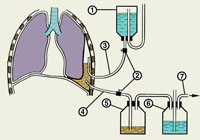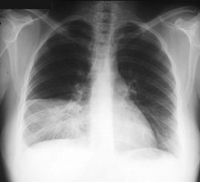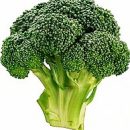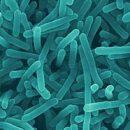Purrites in children most often develops against the background of pneumonia or after it. The most frequent form of the disease is purulent exudative pleurisy, in children the symptoms of intoxication, respiratory and heart failure are expressed particularly strongly and represent a real threat to life.
Content
- What happens to the pleurisy in children?
- Dry pleurisy in children: symptoms
- Serous pleurisy in children
- Purulent pleurisy in children: symptoms
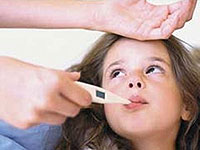 Pleurisy — This is the inflammation of the pleura, smooth serous shell, covering the lungs outside, the lining wall of the chest cavity and the outer surfaces of the mediastinum. Between the inner and outer leaves of the pleura exists the cavity, pleural, there is a small amount of fluid in it, which provides a gliding of the pleura sheets relative to each other when breathing. The development of pleurite is accompanied by either the deposition of the fibrinous plaque on the sheets of pleura (dry pleurisy), which causes their friction on each other, or by the accumulation of exudate in the pleural cavity (exudative pleurisy), which reduces the volume of lungs and causes breathing failure.
Pleurisy — This is the inflammation of the pleura, smooth serous shell, covering the lungs outside, the lining wall of the chest cavity and the outer surfaces of the mediastinum. Between the inner and outer leaves of the pleura exists the cavity, pleural, there is a small amount of fluid in it, which provides a gliding of the pleura sheets relative to each other when breathing. The development of pleurite is accompanied by either the deposition of the fibrinous plaque on the sheets of pleura (dry pleurisy), which causes their friction on each other, or by the accumulation of exudate in the pleural cavity (exudative pleurisy), which reduces the volume of lungs and causes breathing failure.
What happens to the pleurisy in children?
Purrites in children can develop as an independent disease, but in the overwhelming majority it is a complication of pneumonia or lung abscess and develops or against the background of these diseases, or after them. Sometimes the inflammation of the pleura in children occurs on the background of tuberculosis, rheumatism, sepsis, pericarditis or peritonitis.
In children, as in adults, there are dry (fibrinous) and exudative (serous and purulent) pleurisites. Purpenting inflammation of the pleura is diagnosed in 2/3 of cases in children under 5 years old, the share of children under 2 years has half of the cases of Empires Plevra — The most severe disease. With age, the frequency of occurrence of purulent pleurisy decreases, and serous and fibrinous forms are more often detected. At the age of 6 years, serous and dry pleurisy is often detected.
The origin of dry and serous pleurite in 80% is associated with tuberculosis infection, in 15-20% of cases they occur against rheumatism. Petnic pleurisites are usually associated with destructive processes in the lungs and inflammation caused by pneumococci, streptococci, staphylococci.
The development of pleurite contributes to supercooling, overheating, injuries, defective nutrition, frequent colds — Everything that reduces the overall resistance of the children's body and violates blood circulation in Plegre.
Dry pleurisy in children: symptoms
Dry pleurisy is more often evolving against the background of pneumonia, so its manifestations perform on the fore, and to detect the inflammation of the pleura is quite difficult. Signs of dry pleuritis are dry obsessive cough and chest pain, which are enhanced with coughing and deep breathing. The child usually lies on a sick side, because it facilitates pain due to the restriction of the chest excursion. Subfebrile body temperature. If you attach an ear to a sick half of the chest, you can hear sounds that resemble a snow crunch in frosty weather — These are dry, fibrinous flasks, pleura sheets rub against each other, the patient part of the chest lags behind in breathing from a healthy.
Serous pleurisy in children
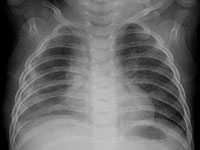 Serous pleurisite can have different nature, but more often as an allergic reaction to tuberculosis infection occurs. The disease begins acutely with an increase in body temperature, the appearance of pain in the side and cough. Weakness, lethargy, decreases appetite, worried about night sweats, the afternoon temperature is held in the afternoon. When a significant amount of serous exudate accumulates in the pleural cavity, the pain in the chest decreases and disappear, their place is occupied by respiratory failure. The child breathes often and superficially, with the slightest load there is a shortness of breath. Skin cover and mucous meal are dry, pale with a bluish tinge, pulse is often even alone, cervical veins swell. Forced position on the patient side, typical of dry pleritic, is replaced by seating. Intercostal gaps are mixed with breathing, patient half of the chest lags behind healthy.
Serous pleurisite can have different nature, but more often as an allergic reaction to tuberculosis infection occurs. The disease begins acutely with an increase in body temperature, the appearance of pain in the side and cough. Weakness, lethargy, decreases appetite, worried about night sweats, the afternoon temperature is held in the afternoon. When a significant amount of serous exudate accumulates in the pleural cavity, the pain in the chest decreases and disappear, their place is occupied by respiratory failure. The child breathes often and superficially, with the slightest load there is a shortness of breath. Skin cover and mucous meal are dry, pale with a bluish tinge, pulse is often even alone, cervical veins swell. Forced position on the patient side, typical of dry pleritic, is replaced by seating. Intercostal gaps are mixed with breathing, patient half of the chest lags behind healthy.
Purulent pleurisy in children: symptoms
Purulent pleurisy leaks hard and characterized by pronounced symptoms of intoxication, respiratory and heart failure. Temperature of the body 400 s, its periodic minor drop causes torrential sweats, shortness of breath increases. The child sesides in bed, breathes often and superficially, the skin is pale, the lips of the blue, as the oxygen insufficiency increases the skin and mucous membranes acquire the earthy shade with a yellowish tint due to the destruction of blood erythrocytes. Heavy intoxication is accompanied by the lesion of the liver, increasing the spleen, disruption of the kidney function. The child's condition becomes critical, threatening life. Immediate intensive therapy and surgical care required.

